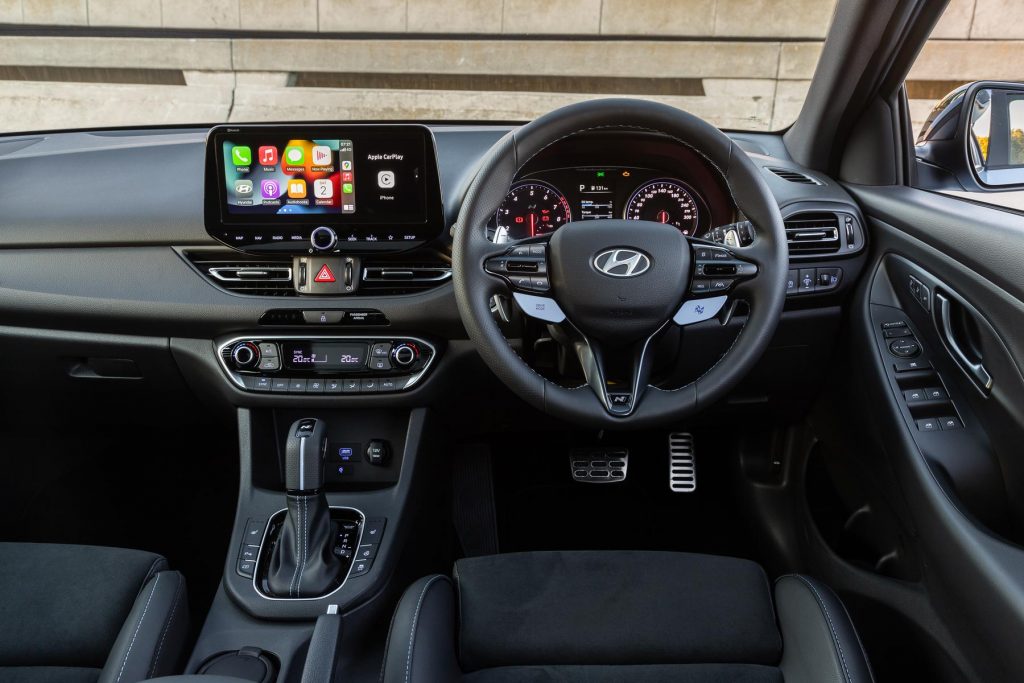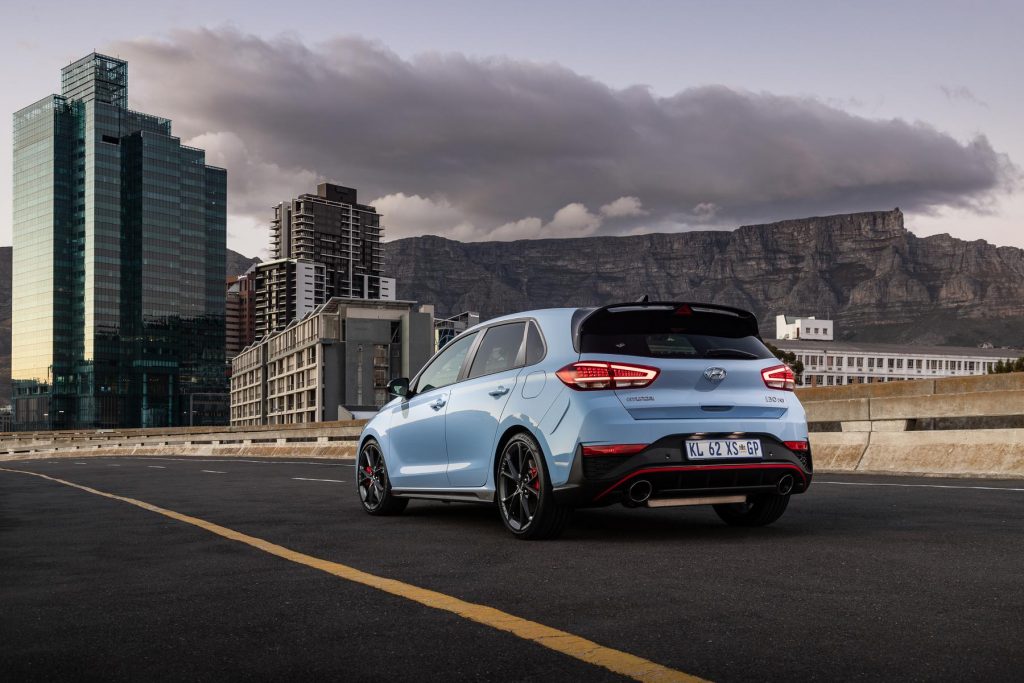Fierce: The Hyundai i30 N in its ‘performance blue’ shade features enlarged dual-exhaust tips and a panoramic glass roof.
What is it?
The cut-throat hot hatch market has shrunk considerably in SA over the last few years following the axing of the performance-orientated Ford Focus ST, Fiesta ST, and Clio R.S models. This move left serious competitors such as the Golf GTI, Civic Type R, and Megane R.S to battle it out for the sales crown in the segment.
This left Hyundai with two options: Admire the segment from afar or make something that’ll give contenders sleepless nights. It went for the latter in 2016 when it introduced its first-ever i30 N and it worked. Although it had a tough time impressing the masses, it meant business. It sounded brutal and had all the thrills to put it on the radar of serious hot hatch rivals — not to mention that it wielded a nicely-matched 6-speed manual transmission with rev-matching.
As far as impressions go, South Africans were just not buying it and according to our unofficial analysis of the market, the sole manual transmission it wielded was the problem. Not true? Ask VW about the manual Golf GTI.
This year, the i30 N was given a makeover and while we love everything that comes with the refresh, from the enlarged dual-exhaust tips, and sweetened looks to fair levels of technology, it lacks the manual box; instead, it wields an 8-speed DCT transmission, for the first time.
So, sadly, it’s an adieu to the manual…
On the Inside
Unlike my initial findings of the pre-facelift model I sampled in 2020, Hyundai has worked tirelessly to sweeten the i30 N’s interior quality, although there’s still a fair usage of plastic material here and there.

In its defence, everything is well put together, further complemented by a panoramic glass roof and sexy, electric bucket seats that offer great levels of support without being too firm. There’s an intuitive 8″ free-floating infotainment system that I have fiddled with in other Hyundai products. The system accepts Apple CarPlay and Android Auto connectivity and worked rather well during my time with the car.
Driving
Dressed in a stunning Performance Blue shade, the i30 N’s beauty lies underneath its bonnet. It packs the same 2.0-litre turbocharged petrol engine that’s been massaged to deliver 206 kW of power and 392 Nm of torque — a 4 kW and 39 Nm bump over its pre-facelift manual-equipped counterpart.
Shoving power to the front wheels is a new 8-speed DCT transmission and an electronically controlled limited-slip differential. The transmission is crisp, and quick enough, although there’s less involvement when compared to the i30 N manual. Sadly, the steering wheel-mounted paddle shifters don’t do it any justice.

Overall, the 2.0-litre engine is aggressive, especially in its sportier setting, and that’s accompanied by pops and crackles when you lift off. For those wanting a civilised commute, the i30 N has different driving modes that alter the engine sound.
Regarding road manners, I drove the i30 N in and around the City of Cape Town and it is comfortable in its standard setting. Yet the N and Sport modes transform the hatch into an untamed beast, thanks to a firmer ride because of the adaptive suspension modes and 19″ wheels, but that suits the car in its very own way. Strange, I know.
Owning
At the time of penning this review, Hyundai had listed the i30 N at a starting price tag of R749,900, which if you are after the performance and a car you’d drive daily, is worth every penny.
Like most hot hatches, the i30 N is difficult to drive economically and during my time with it, I averaged in the region of 9.8l/100 km which, if driven with efficiency in mind, could drop below the 8s.
Verdict
There aren’t major drawbacks with the i30 N with its DCT transmission. It’s spacious, looks fierce, drives beautifully, and has all the perks to shine in the shrinking hot hatch segment. Hyundai should at least offer the manual as an option for purists like me, because I am sure there are still those who prefer them.